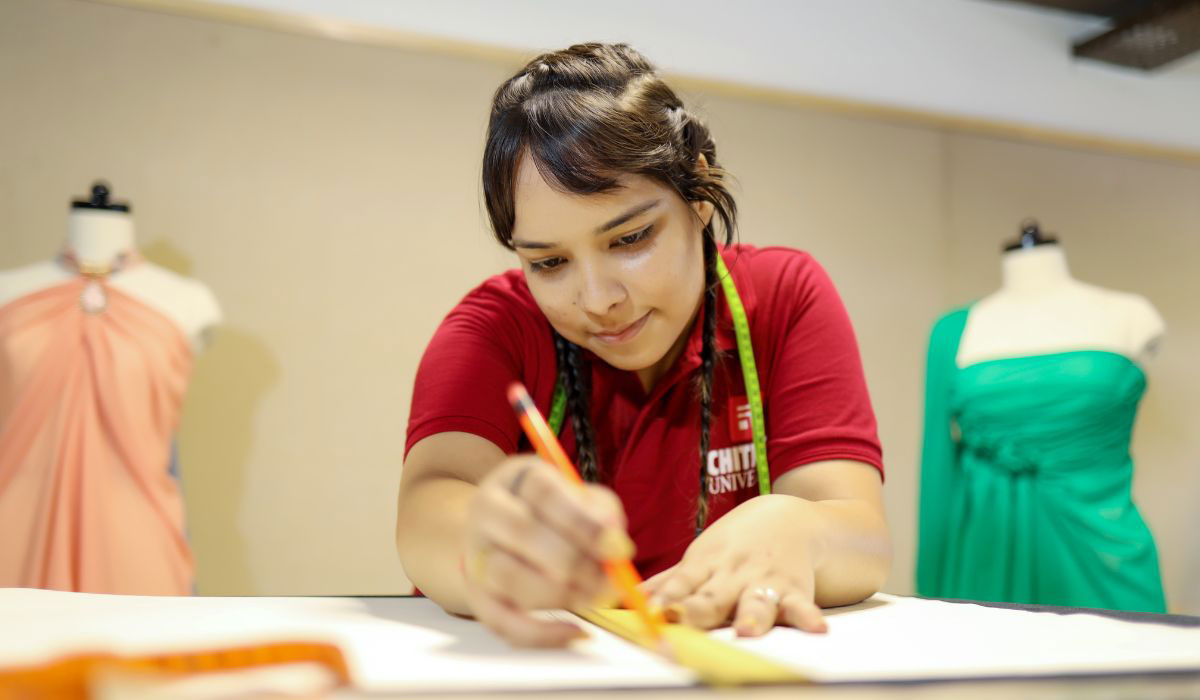The fashion industry has always been at the front of innovation. Starting from the invention of something as simple as the sewing machine to the rise of e-commerce, fashion is an extremely forward-looking industry.
Fashion technology is currently developing at a rate that is quicker than ever. Robots have started sewing and cutting fabric, AI algorithm have started predicting style trends and clothes to be worn in virtual reality, and an array of innovations shows how technology has started automating and personalizing the fashion space.
Seizing the opportunity to discover more revenue streams and business models enables fashion companies to partner with technology providers and even create their own tech. Meanwhile, with the industry facing a long overdue reckoning with an environmental and social impact, it has been reexamining processes across the value chain in an attempt to reinvent.
There are new ideas that are governing the future of the fashion business. In this blog, we will discover them individually.
Emerging Trends in Business:
Fluid Fashion: Gender-fluid fashion has gained immense traction amidst changing consumer preferences towards gender expression. For so many brands and even retailers, the lines have been blurred between men’s wear and women’s wear.
In the future, it is expected that fluid fashion will get developed and require marketing, product design, and digital and in-store shopping experiences.
Increase in Renting: Formal attire has started taking new definitions as shoppers rethink how they dress for work, weddings, and other occasions.
Although offices and events may become more casual, special occasions may also be dominated by statement-making outfits that consumers can rent or even purchase to stand out when they decide to dress up.
Direct-to-Consumer Reckoning: Even though brands all across price segments and categories have embraced the digital direct-to-consumer channels, the digital marketing costs and e-commerce changes have managed to put the viability of the model into question.
For growth, brands should diversify their channel mix including the wholesale and third-party marketplace along with the direct-to-consumer models.
Tracking Green Washing: With the industry dealing with damaging environmental and social impact, the consumers and regulators along with other stakeholders might scrutinize how brands communicate about their sustainability credentials.
In case the brands avoid greenwashing, they must also show that they are making meaningful and credible changes while also abiding by emerging regulatory requirements.
Future Proof Manufacturing: Consistent disruptions in supply chains are a catalyst to reconfigure global production.
Textile manufacturers can easily create new supply chain models around vertical integration, small-batch production, and nearshoring that is enabled by better digitization.
Sustainability:
Sustainability can become a primary concern for consumers and businesses with the apparel industry being no exception. Consumers are becoming more and more conscious of the impact of clothes on the environment and are also demanding clothes made from sustainable materials and produced in a responsible way.
Brands have also started responding by including sustainable materials in their products, reducing their carbon footprint, and implementing environmentally friendly manufacturing. Consumers have also started becoming increasingly vocal about their desire for sustainable apparel as their actions remain constrained by costs.
What’s more, waste is another problem as the majority of textiles end up in landfills but most apparel brands are not even willing to reduce the number of products that are manufactured and sold for supporting a circular business model.
Tech Intervention:
The apparel industry has started embracing digital transformation using technology for streamlining operations, improving customer experiences, and understanding customers.
Brands are using data analytics for gaining insights into customer preferences and purchasing habits while including insights into product development and marketing strategies. The use of AI, automation, and machine learning can also help brands for improving supply chain operations and reduce waste.
Digitalization also helps apparel companies stay operational during lockdowns and worker shortages. After Covid, countries such as China understood the importance of being agile. This led to investment in AI and other technologies for omnichannel fulfilment, real-time stock management, pricing, and on-demand production.
There is a new chapter for digital marketing with customer targeting becoming less effective and costly. More and more brands need to embrace creative campaigns including retail media networks and metaverse for achieving greater ROI on marketing costs and for gathering valuable first-party data that can be leveraged for deepening customer relationships.
Also, read this blog post: How Is Artificial Intelligence Changing the Future of Fashion?
What Does the Future Look Like?
The leaders in the fashion industry need to pay attention to Macroeconomics and political problems so that products can be created and sold consistently. They must also develop risk mitigation strategies that can be easily implemented as conflicts and government regulations keep evolving. In addition, these leaders will also need to think critically about where to operate and look beyond top-line growth while evaluating new markets.
Brands must consider the factors that can affect shopping behaviors and respond accordingly. Even as most customers reduce their spending, brands will have an opportunity to keep their customers engaged with rental channels and off-price retailers. These strategies may require careful execution for ensuring margins so that brand reputations are always protected.
Brands should also update their merchandising and design approaches for shifting ideas around gender lines in fashion and dress codes. Everyday office attire can become more casual and special occasion attire will become bold. What’s more, fashion leaders are now in a unique position to rethink their ways when it comes to producing, distributing, and marketing.
The supply chains should stay disrupted by the pandemic and elevate the need to invest in quicker and closer manufacturing systems. While the direct-to-consumer and digital channels stay a top priority, the fashion industry leaders will also need to diversify their sales channels for maintaining efficiency and market relevance.
Brands must strive to be more creative in marketing to attract their customers with bold and differentiated content that creates a strong impression. To easily execute these changes and react better to regulations around sustainability marketing, the fashion industry must rethink how talent can be allocated, promoted, and established.
Wrapping Up:
The future of the fashion business is directly linked to the strategic measures taken by brands in keeping up with the new trends. In the middle of these changes, it is absolutely important that the professionals pursuing this field work in alignment with the new trends for the collective growth of the industry.
The growth of the fashion business is directly associated with the kind of education that is offered to students who are presently pursuing study programs in the industry. If you are also interested in contributing to the growth of the fashion business then pursuing a study program from a recognized institution is the fundamental step.
Chitkara University provides four years of Bachelor of Design in Fashion Design that is taught by professionals who address the complex problems in the globally changing scenario. Pursue this program and take the first step towards building a successful career in the fashion business, today.






